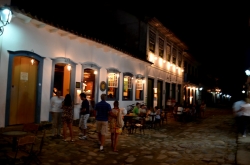ABOUT Ancient city of Hatra
Hatra, an ancient Mesopotamian city located in what is now northern Iraq, was a UNESCO World Heritage Site that was almost destroyed by the Islamic State (ISIS) in 2015.
The ancient city of Hatra, located approximately 110 kilometers southwest of Mosul and 4 kilometers west of the intermittent Wadi al-Tharthar, unfolds a rich and intricate history spanning centuries. This urban enclave, emerging on the edge of the steppe at the crossroads of two great empires—the Parthian Arsacid and the Roman Empire—blossomed into a thriving hub inhabited by nomadic tribes in the first century AD.
The name "Hatra," derived from Aramaic, translates to "fortification" or "fortified settlement," and was closely associated with the Arsacid realm. Throughout the second century, Hatra expanded from a modest fortress to an impressive walled city spanning over 300 hectares, with walls more than 10 meters high and watchtowers. This prominence is reflected in the countless unsuccessful attempts by Roman emperors like Trajan and Septimius Severus to capture the city. Its featuring a central core that included a temple dedicated to the sun god, Maran.
The city is renowned for its fusion of Greek, Mesopotamian, Canaanite, Aramaic, and Arabic architecture. The city was also known as Beiṯ Ĕlāhā, House of God in Aramaic, because it had various temples dedicated to gods of different religions and gods, such as the temple to Nergal (Assyro-Babylonian and Akkadian), Hermes (Greek), Atargatis (Syro- Aramaic), Allat, Shamiyyah (Arabic) and Shamash (the Mesopotamian sun god). Other deities mentioned in the Hatran Aramaic inscriptions were the Aramaic Ba'al Shamayn and the female deity known as Ashurbel, who was perhaps an assimilation of the two deities, the Assyrian god Ashur and the Babylonian Bel, despite being individually male. .
In 224, the Sassanids toppled the Arsacid dynasty in Iran. Despite inscriptions indicating the presence of Roman troops in the city in 235 and 238, Hatra eventually fell to the Sassanids in 240 or 241 after a protracted and meticulous siege. Hatra's fall marked a pivotal stage for the Sassanids, enabling them to solidify their dominion over Mesopotamia and establish a strategic foothold for future attacks on the Roman Empire, which would lead to the tumultuous events of the 3rd century.
Modern archaeological efforts have shed light on Hatra's fascinating history. From the initial explorations by John Ross in 1836 to the meticulous studies carried out by the Deutsche Orient-Gesellschaft between 1906 and 1911, the city has been painstakingly documented. Nevertheless, its future remains imperiled. In 2015, the Islamic State embarked on a destructive campaign against Hatra and other cultural relics, deeming them heretical according to their extremist interpretation of Islam.
In a hopeful turn of events, the extremists were eventually ousted from Hatra in 2017 following intense clashes. The city was included in UNESCO's List of World Heritage in Danger. Despite enduring countless challenges over the centuries, Hatra's history endures as a testament to human resilience in times of change and conflict.
The ancient city of Hatra, located approximately 110 kilometers southwest of Mosul and 4 kilometers west of the intermittent Wadi al-Tharthar, unfolds a rich and intricate history spanning centuries. This urban enclave, emerging on the edge of the steppe at the crossroads of two great empires—the Parthian Arsacid and the Roman Empire—blossomed into a thriving hub inhabited by nomadic tribes in the first century AD.
The name "Hatra," derived from Aramaic, translates to "fortification" or "fortified settlement," and was closely associated with the Arsacid realm. Throughout the second century, Hatra expanded from a modest fortress to an impressive walled city spanning over 300 hectares, with walls more than 10 meters high and watchtowers. This prominence is reflected in the countless unsuccessful attempts by Roman emperors like Trajan and Septimius Severus to capture the city. Its featuring a central core that included a temple dedicated to the sun god, Maran.
The city is renowned for its fusion of Greek, Mesopotamian, Canaanite, Aramaic, and Arabic architecture. The city was also known as Beiṯ Ĕlāhā, House of God in Aramaic, because it had various temples dedicated to gods of different religions and gods, such as the temple to Nergal (Assyro-Babylonian and Akkadian), Hermes (Greek), Atargatis (Syro- Aramaic), Allat, Shamiyyah (Arabic) and Shamash (the Mesopotamian sun god). Other deities mentioned in the Hatran Aramaic inscriptions were the Aramaic Ba'al Shamayn and the female deity known as Ashurbel, who was perhaps an assimilation of the two deities, the Assyrian god Ashur and the Babylonian Bel, despite being individually male. .
In 224, the Sassanids toppled the Arsacid dynasty in Iran. Despite inscriptions indicating the presence of Roman troops in the city in 235 and 238, Hatra eventually fell to the Sassanids in 240 or 241 after a protracted and meticulous siege. Hatra's fall marked a pivotal stage for the Sassanids, enabling them to solidify their dominion over Mesopotamia and establish a strategic foothold for future attacks on the Roman Empire, which would lead to the tumultuous events of the 3rd century.
Modern archaeological efforts have shed light on Hatra's fascinating history. From the initial explorations by John Ross in 1836 to the meticulous studies carried out by the Deutsche Orient-Gesellschaft between 1906 and 1911, the city has been painstakingly documented. Nevertheless, its future remains imperiled. In 2015, the Islamic State embarked on a destructive campaign against Hatra and other cultural relics, deeming them heretical according to their extremist interpretation of Islam.
In a hopeful turn of events, the extremists were eventually ousted from Hatra in 2017 following intense clashes. The city was included in UNESCO's List of World Heritage in Danger. Despite enduring countless challenges over the centuries, Hatra's history endures as a testament to human resilience in times of change and conflict.




